
When National Geographic puts its stamp of approval on an image, whether it’s a travel shot or a wildlife one, chances are that it will captivate you. Just look at the example above taken by French photographer Greg Lecoeur. The underwater photo of sardine migration on the Wild Coast of South Africa earned him the grand prize for this year’s “National Geographic Nature Photographer of the Year Contest.”
Photographers submitted their photos into the categories of Action, Landscape, Animal Portraits, and Environmental Issues. First, second, and third place prizes are $2,500, $750 (plus a signed National Geographic book), and $500, respectively. As the grand prize winner, Lecoeur received a 10-day trip for two to the Galápagos with National Geographic Expeditions and two 15-minute image portfolio reviews with National Geographic photo editors.
The French photographer spent two weeks waiting for the perfect moment, when the natural predation of sardines would occur. “During the sardine migration along the Wild Coast of South Africa, millions of sardines are preyed upon by marine predators such as dolphins, marine birds, sharks, whales, penguins, sailfishes, and sea lions. The hunt begins with common dolphins that have developed special hunting techniques to create and drive bait balls to the surface,” Lecouer said in a press release. “In recent years, probably due to overfishing and climate change, the annual sardine run has become more and more unpredictable.”
Besides Lecouer’s grand prize photo above (which took first place in the Action category), view the rest of the winning images accompanied by comments from the photographers below.
Second Place, Action – Tori Shea-Ostberg
“An EF2 tornado bears down on a home in Wray, Colorado—May 7, 2016. As soon as we were safe, as the tornado roared off into the distance through a field before roping out, we scrambled up the hill to check on the residents. Thankfully, everyone was alright, and we were grateful for that. As I was checking in with a young woman coming out of the basement, we became very aware of a strong new circulation—right above our heads. We needed to run for cover, and did so before saying a proper goodbye.”

Third Place, Action – Zsolt Kudich
“A remarkable conservation success story, the graceful Great Egret was saved from the brink of disappearance in Hungary, when in 1921 there were only 31 mating pairs remaining. Less than a century later, international conservation efforts have triumphed. We can now count over 3,000 mating pairs in Hungary alone.”
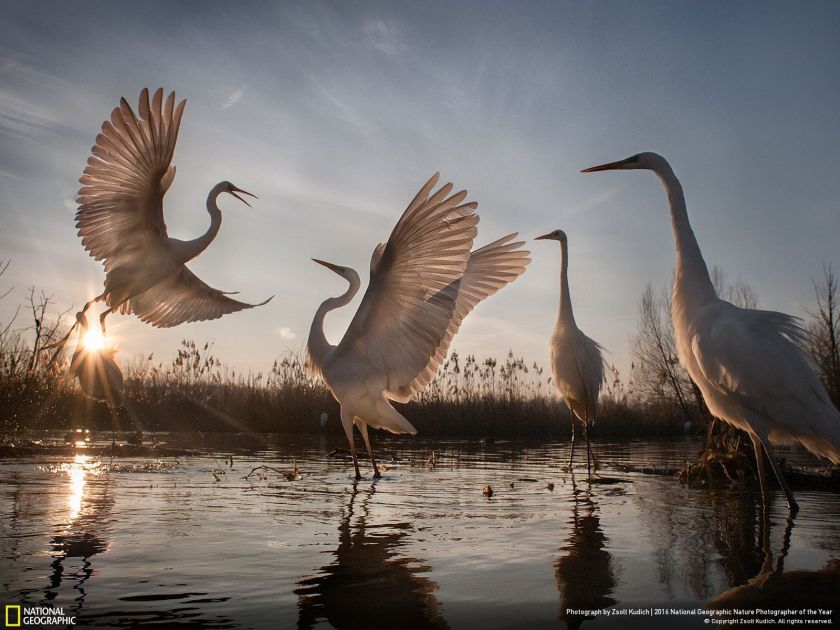
First Place, Landscape – Jacob Kaptein
“To restore original natural dynamics in streams many measures are necessary. In the ‘Leuvenumse beek,’ a nature preservation, [workers] tried to increase heterogeneity of the river bottom and water retention by putting dead wood in the steam system. In autumn when rainfall is high, [sections] of [the] forest get flooded. I saw this little beech tree in the water, trying to survive under these harsh conditions. I returned to this place to take pictures. One evening all the conditions were satisfactory.”
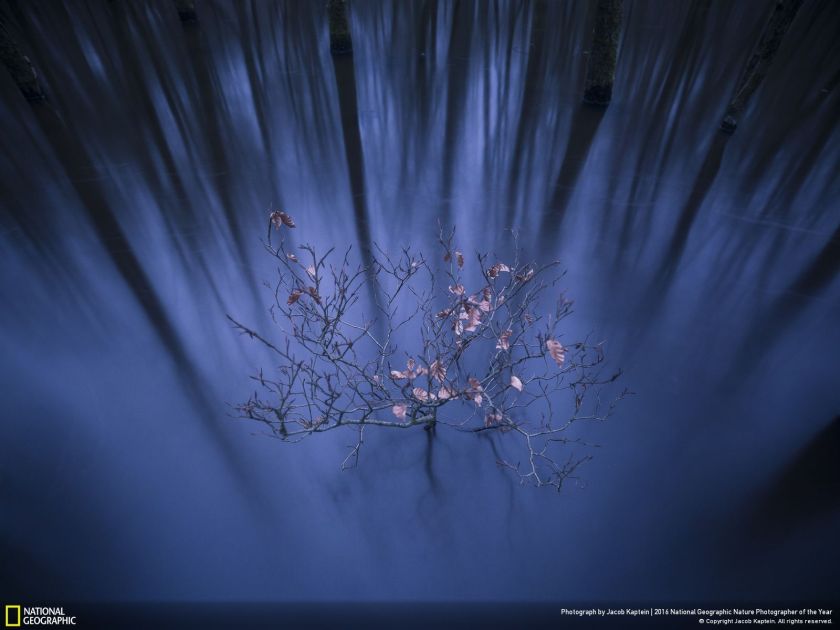
Second Place, Landscape – Alessandro Gruzza
“The first cold days of winter have frozen the surface of a pond. The first snowfall has revealed its delicate beauty. A long shutter speed enhances the movement of the clouds around Mt. Cimon de la Pala, Paneveggio-Pale San Martino Natural Park, Italy.”
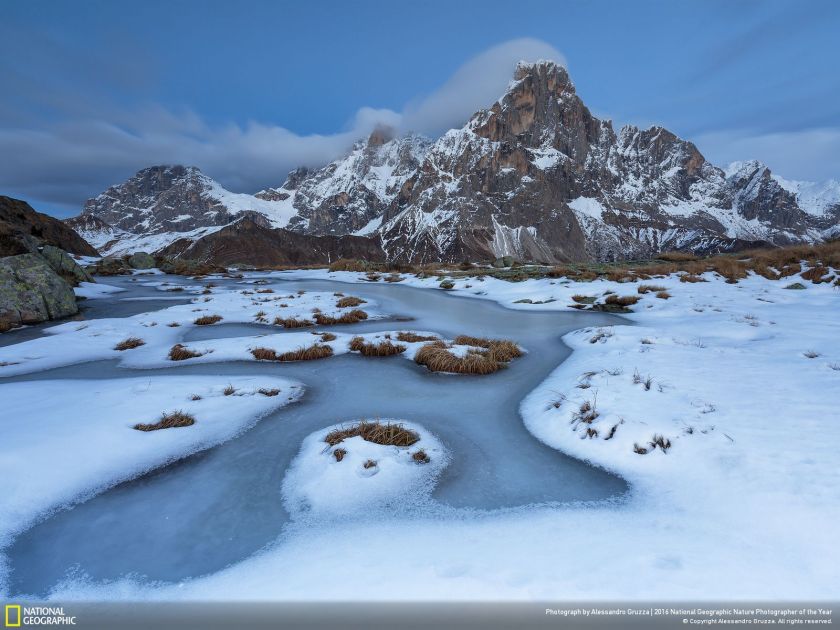
Third Place, Landscape – Santiago Borja
“A colossal Cumulonimbus flashes over the Pacific Ocean, as we circled around it at 37,000 feet, en route to South America.”
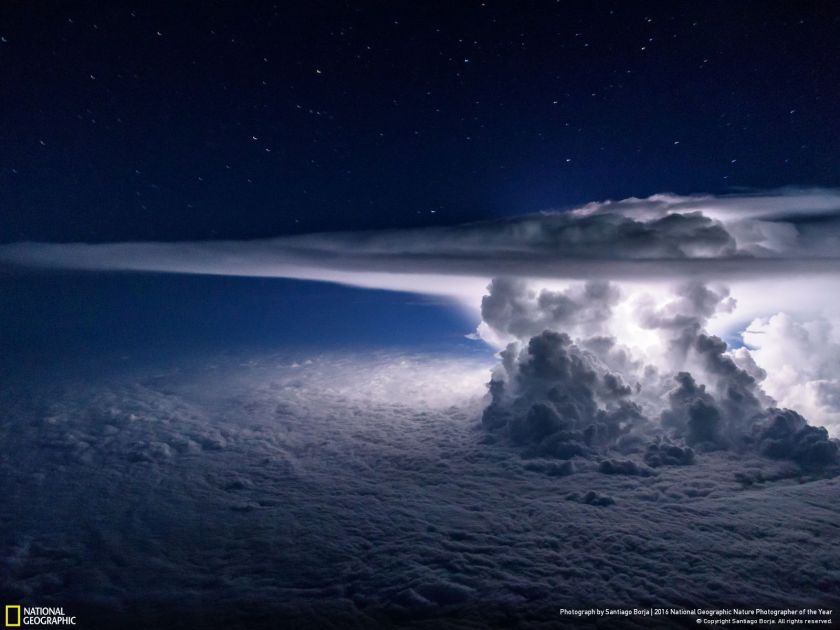
First Place, Animal Portraits – Varun Aditya
“A morning stroll into the blissful forest! Ceaseless drizzles dampening the woods for 12 hours a day; the serene gloom, which kept me guessing if it was night or day; heavy fog, chilling breeze, and the perennial silence could calm roaring spirits. And there, I spotted this 20-centimeter beauty, the green vine snake! … I was blessed to see this at the place I was at. I immediately switched from the macro to the wide angle lens. ”
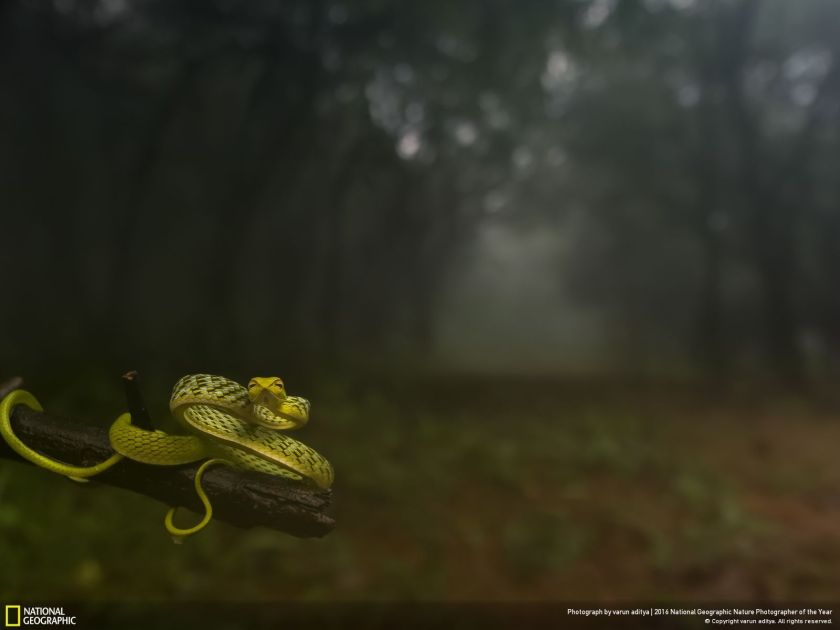
Second Place, Animal Portraits – Michael O’Neill
“Fry of a Peacock Bass hover around their mom for protection against predators. Peacock Bass, part of the Cichlid family, exercise excellent parental care and will protect their young against any threat that approaches them. This tropical species from South America was intentionally introduced in South Florida during the 1980s to control the African Tilapia, another invasive species.”
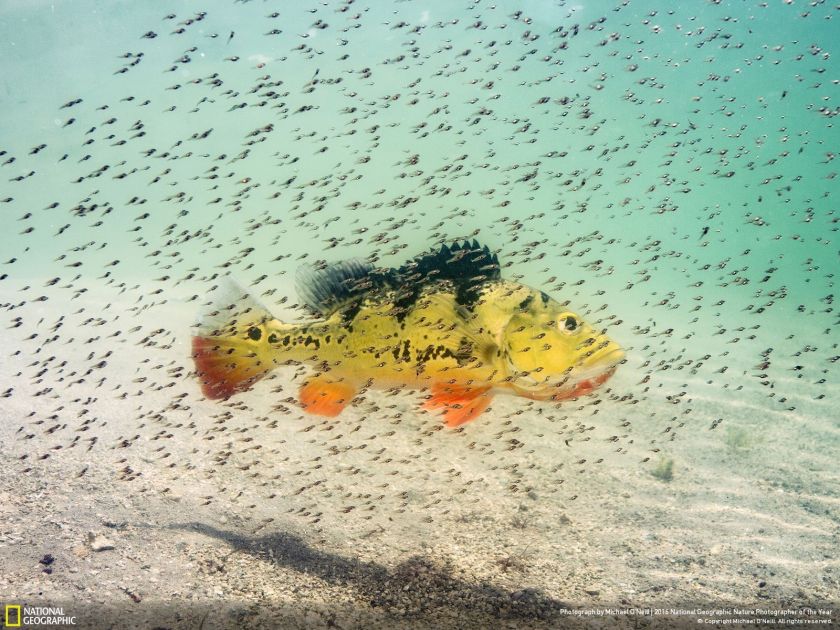
Third Place, Animal Portraits – Jose Pesquero Gomez
“[To quote] Luis A. Ribeiro Branco: ‘Friendship knows no color, nationality, race, and social level; friendship knows no age and gender; friendship knows no distance.’ This [is the] way [it] must be. And this image perfectly [represents] that message. Two Empusa pennata, which seem to be playing a game on the thin plant. [It’s] uncommon to see a couple of this species together.”

First Place, Environmental Issues – Vadim Balakin
“These polar bear remains [were] discovered at one of the islands of Northern Svalbard. Unfortunately, we do not know definitively whether the bear died from starving or aging—if we see the healthy teeth, it’s likely from starving. They say nowadays such remains are found very often.”
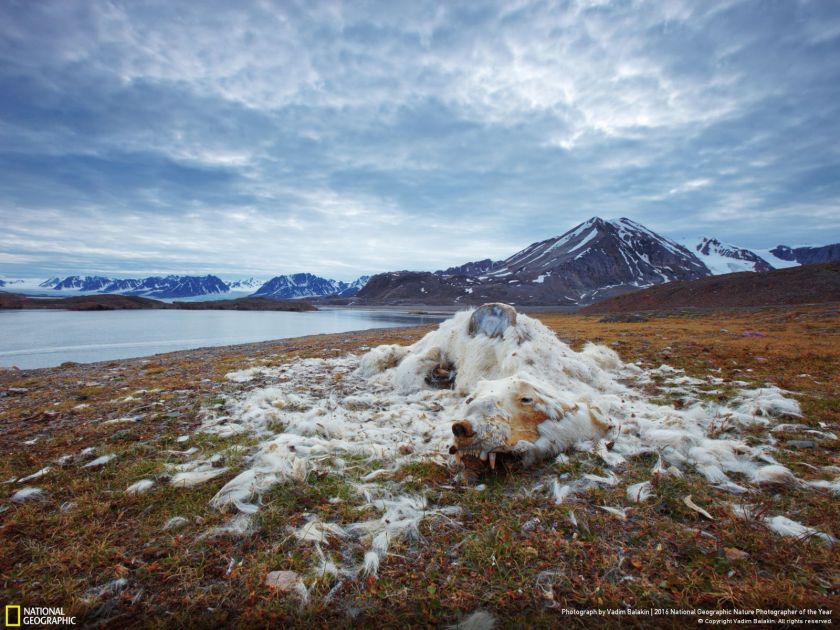
Second Place, Environmental Issues – Chris McCann
“Eighty percent of the San Francisco Bay Area wetlands—16,500 acres—has been developed for salt mining. Water is channeled into these large ponds, leaves through evaporation, and the salt is then collected. The tint of each pond is an indication of its salinity. Micro-organisms inside the pond change color according to the salinity of its environment. This high salinity salt pond is located right next to Facebook HQ where ~4,000 people work every day.”
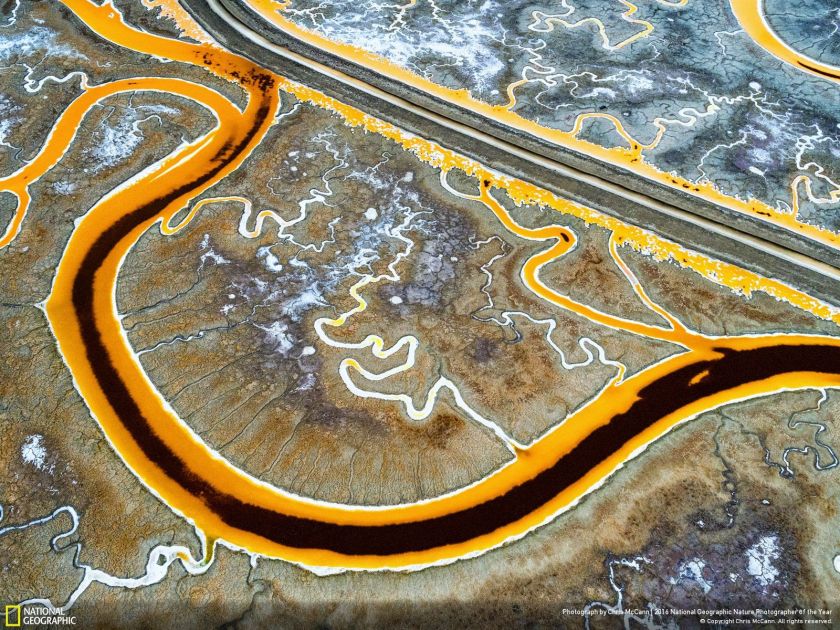
Third Place, Environmental Issues – Eleanor Ryder
“This image is a magnification of plastic particles in eyeliner, exploring just one facet of the synthetic swarm suspended in our oceans. The particles, lash lengthening fibers, illuminating powders, and glitters these products contain are in fact tiny pieces of plastic. Every time we wash these products from our bodies or ingest them as we lick the glosses from our lips, we unknowingly add to the trillions of micro-plastic particles currently infesting every level of the ocean.”
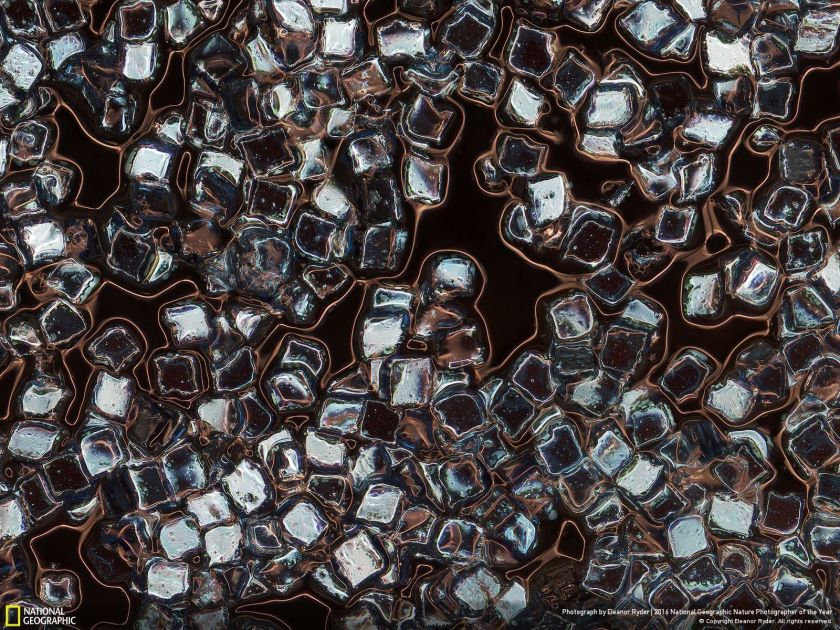
See all the images from the competition here.
This article was featured in the InsideHook newsletter. Sign up now.






















